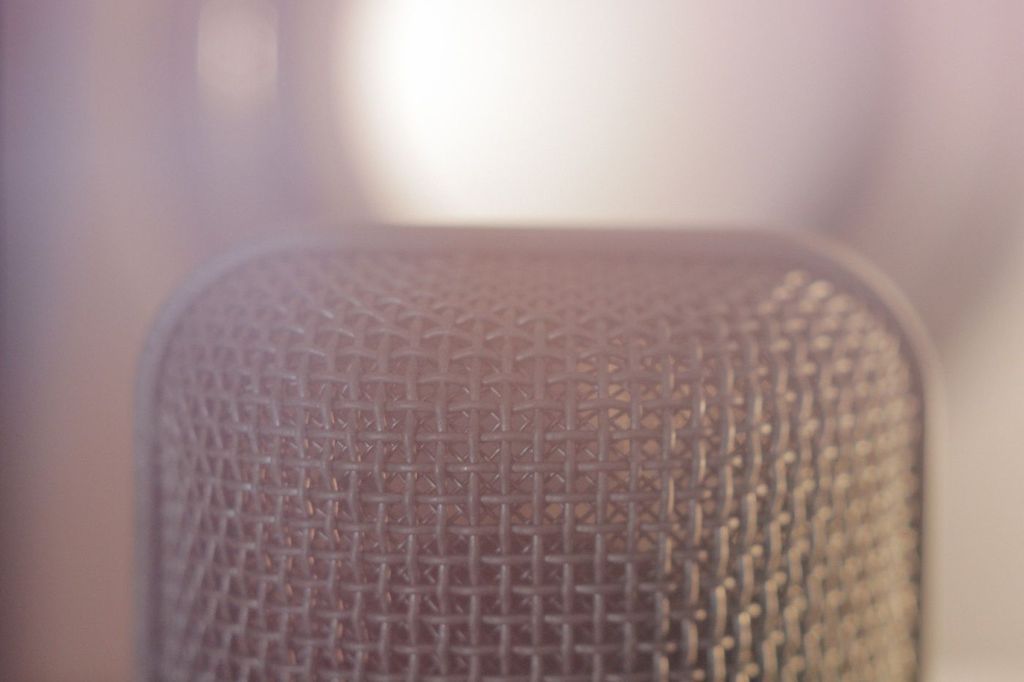Many home studio owners are on a limited budget. You may have only a handful decent studio mics. Perhaps even, you realized that the best $100 you could spend was a solid large diaphragm condenser mic and that’s all you have.
You’re looking to get newer, better sounds in your recordings. What do you do?
Do you slap down your credit card and pick up a new mic? Perhaps. Here’s another idea: How about instead we simply maximize the mic(s) we already own and get more out of them?
That sounds better to me already!
1. Leverage With Microphone Distance
Forgive me if this sounds simplistic, but how close or far away from the source you place your microphone is one of the biggest things that affects the recording you will get.
The closer a mic is to the kick drum, the more click or attack of the beater you likely will get. Conversely, the further away that same mic is placed, your recording will have more bottom end and fatness.
If you close mic an acoustic guitar, you may get a beefy (or tinny) sound that might be perfect for the song in question. Move the mic a foot or two back, and you get a more rounded out natural guitar sound that incorporates more of the room’s natural reverberation, good or bad.
You get the idea. Even the slightest change forward or backward can radically alter the tone, characteristics, and dynamics of a recording.
How does this help you practically?
When you set up to record anything, always leave time to experiment with mic placement, particularly in regards to distance from the source.
Even in an untreated home studio, don’t assume that closer is better. The key here is to experiment and discover what sounds BEST for the song.
2. Leverage With Microphone Angle
Distance aside, one way to really alter the sound of what you are recording is to simply adjust the angle of the microphone relative to the source.
A great example of this is when miking a guitar cabinet.
A microphone facing the grill of the cabinet will have one sound (potentially bright and clear), while slightly angling the same mic to the left or right 45 degrees will give the guitar a distinctly different, more mellow and round tone. It’s truly remarkable.
This phenomenon is called being on or off axis. You really owe it to yourself to experiment with microphone angles in all areas of recording.
Snare drum mics sound very different depending on the angle over the drum. Vocals can be more or less sibilant depending on the axis of the mic. Acoustic guitar can sound fuller or brighter all with a simple twist of the mic.
So simple, it's beautiful. 3. Leverage The Back Of The MicOne final way you can leverage your current set of microphones is to think about what so many people forget to think about - the back of the mic!
3. Leverage The Back Of The MicOne final way you can leverage your current set of microphones is to think about what so many people forget to think about - the back of the mic!
In most cases in the home studio you are using microphones with a cardioid polar pattern. That means that the mic picks up sound primarily from the front. What this ALSO means is that it primarily rejects sound at the back.
This is very valuable to know.
Since microphones don't have brains (like we do) and they can only hear what source you point them at (an in proportion to how close they are to that source) then the logic follows that the mic will "ignore" whatever we place it's back directly to.
Make sense?
So how this plays out in the real world is simple. Acknowledge any and all areas of your room that you want to reject sound, and then make sure your mic has it's back facing that area.
For many of us this can be the door to our room (since sound leaks in there). The same can be true with any windows we have.
Placing the back of the mic to "face" the door or windows helps keep unwanted outside noise from getting into your recordings.
Have a noisy computer fan?
The back of the mic is the perfect way to reject that junk.
You're getting the idea. Leverage your microphone(s) by thinking not only about what you WANT the mic to hear, but what you DON'T want the mic to hear as well and you'll come out with a better recording every time.
Save Money And Simplify Your Life
With so many mics to choose from for your studio you can easily get a headache trying to decide.
Maybe your budget won’t give you any options, which in that case your life is simple. Either way, you need to do yourself a favor and get the absolute most out of your current mics before you move on.
Don’t be fooled by the simplicity of these three techniques.
This is audio engineering at its core: small adjustments and changes making the biggest of differences in the final result.
Guest post for SoundBetter by Graham Cochrane of http://therecordingrevolution.com/

